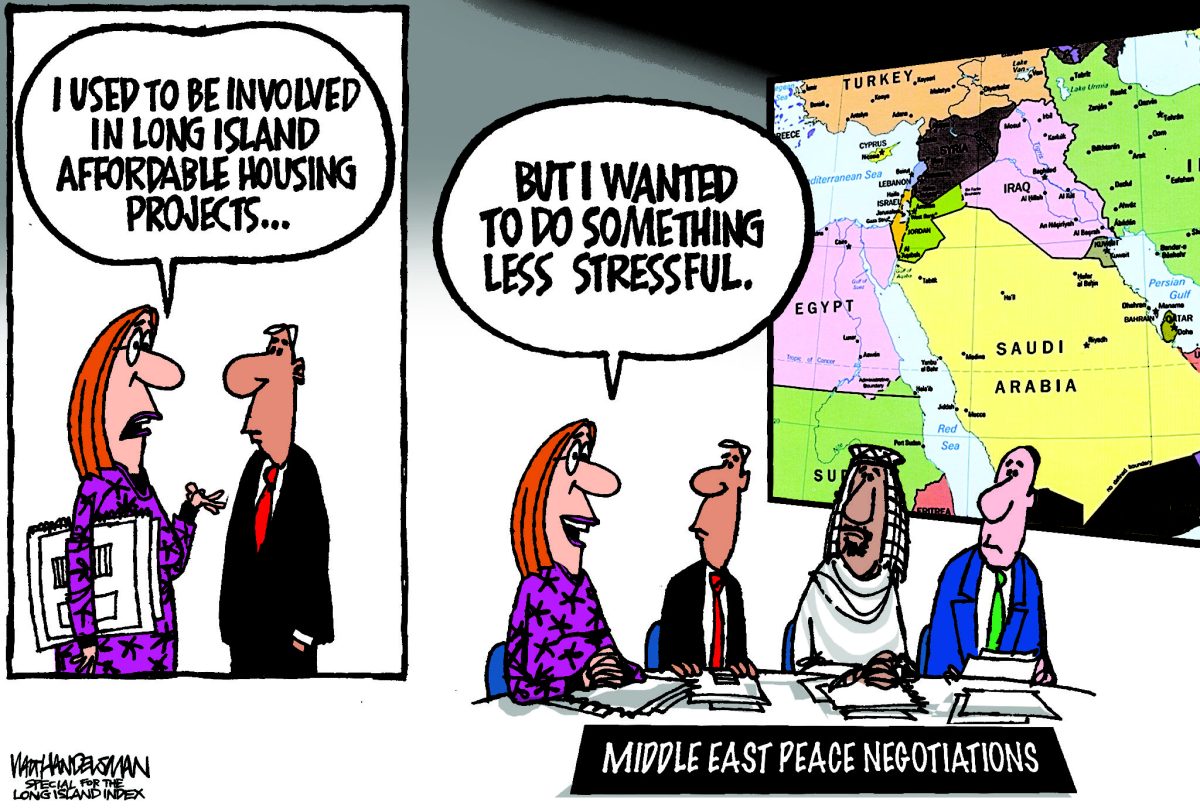By Neal Lewis
Vacancy rates for stores in Farmingdale are down to just 3 percent. There’s a new buzz of activity with family events and after-work concerts all signaling that this downtown is on the rise. It creates an infectious energy that underpins the growing appeal of Long Island’s latest downtown developments.
For over a decade I’ve served on the Nassau County Planning Commission, and it’s remarkable how the discussions of proposed multifamily housing have evolved. The questions frequently asked today are: Is the proposed development in a downtown? Is it near transit? Is it consistent with “smart growth” Is it walkable, with stores nearby? Is it affordable?
Increasingly, proposed projects come to the commission with community support already established, because developers understand that they must address local concerns about traffic, parking, impact on schools, and street-appeal.
The change in tone is due in part to ongoing public education by entities like the Long Island Index, which has highlighted the competitive positioning of LI and the “brain drain” of college graduates leaving the Island for regions with more housing options. Credit is also due to Vision Long Island, which focuses on working with communities “from the bottom up.” This nonprofit group recognizes projects that successfully implement “smart growth” principles such as walkability, mixed-use, transit access, community collaboration, and a clear sense of place.
Both organizations have emphasized the advantages of transit-oriented downtown developments that increase density where it can be handled most efficiently and decrease pressure to build on open space that should be preserved.
There are significant environmental benefits to “smart growth” developments that reduce reliance on cars, maximize the use of infrastructure, and concentrate vitality. Sustainability is enhanced when all of that is achieved.
The greatest challenge now is to make downtown developments affordable, so that those earning more modest incomes, including recent college graduates, can live on their own on Long Island. Typically, the multifamily rental housing that is being proposed is either luxury or senior housing.
New York State requires that 10 percent of new multifamily housing be affordable, but only under certain circumstances. The requirement does not apply to rental properties, and it only applies to subdivisions when a “density bonus” incentive is sought. Even then, the developer can build the affordable units in another community or avoid the requirement altogether by paying into a fund.
A policy recently adopted by the Village of Garden City may provide a better solution. It comes in the wake of lengthy litigation and responds to a federal judicial ruling, which may signal that federal courts will no longer tolerate exclusionary zoning.
The policy requires that new multifamily subdivisions be at least 10-percent affordable. The affordable units must be built at the same time and in the same community; there is no option to pay into a fund, and the 10-percent affordable set-aside is mandatory, rather than merely incentivized.
Another solution is to revisit the minimum size of apartments as required in local codes. Smaller apartments with newly designed, space-efficient, convertible furniture could enable costs to be reduced without reducing functionality.
The demand for affordable downtown housing is clear. At the smart growth developments that are being built, there are few vacancies. The question is: Will the Long Islanders who want to live downtown be able to?
Long Islanders increasingly prefer that option for themselves and their children. A recent survey by the Long Island Index found that while 15 percent of Long Islanders currently live in an apartment, a condo or a townhouse, 29 percent said they want to live in one of those options in five years. In addition, a majority of LI residents supported raising height limits in local downtowns to build apartments—a change supported by 70 percent of residents aged 18-34. And 60 percent of the Island’s residents said the lack of affordable housing is a very or extremely serious problem.
Long Islanders want more affordable housing downtown. Although most of the new units being built are not affordable, there has been a change in tone and substance heard in planning board and town board hearings across Long Island. Many new multifamily projects have already been approved and built. This experience should pave the way for more downtown housing options in our future.
Neal Lewis, a resident of Massapequa, is executive director of the Sustainability Institute at Molloy College and a member of the Nassau County Planning Commission.
Illustration by two-time Pulitzer Prize-winner Walt Handelsman
































